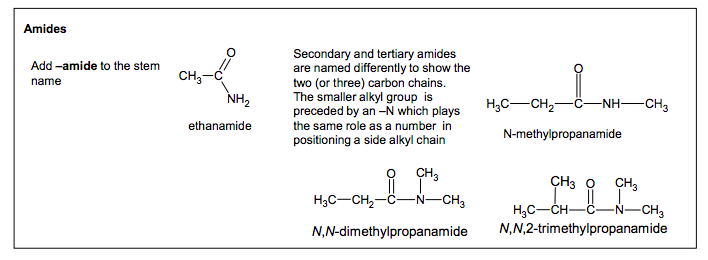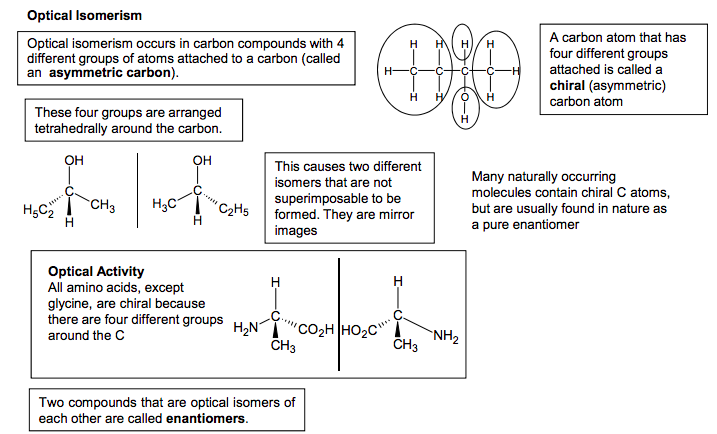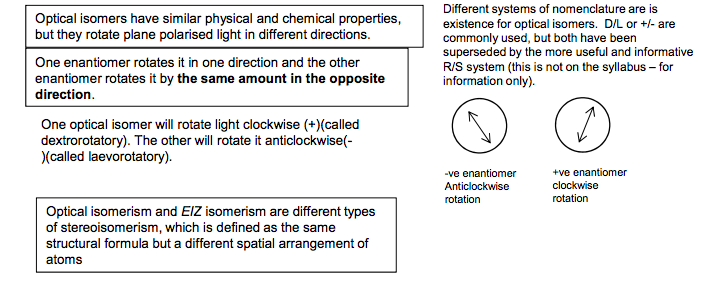Reactions of amino acids



6.2.2 Amino Acids and Chirality General structure of an α amino acid NH2 CH CO2H R The R group can be a variety of different things depending on what amino acid it is. The simplest amino acid is glycine, where the R is an H NH2 CH2 CO2H Some amino acids have an extra carboxylic acid or an amine group on the R group. These are classed as acidic or basic (respectively) amino acids NH2 C CO2H CH2 H CO2H Aspartic acid Naming amino acids You do not need to know any common names for the 20 essential amino acids. We should, however, be able to name given amino acids using IUPAC organic naming 2-aminobutanedioic acid NH2 CH2 CO2H (2-)aminoethanoic acid NH2 C CO2H CH2 H OH 2-amino-3- hydroxypropanoic acid H2N C CO2H (CH2 ) H NH 4 2 Lycine (basic) 2,6-diaminohexanoic acid NH2 C CO2H CH2 H CO2H Zwitterions The no charge form of an amino acid never occurs. The amino acid exists as a dipolar zwitterion. H2N C CO2H H R H3N C + CO2 – H R Amino acids are often solids The ionic interaction between zwitterions explains the relatively high melting points of amino acids as opposed to the weaker hydrogen bonding that would occur in the no charge form. Zwitterion Acidity and Basicity The amine group is basic and the carboxylic acid group is acidic. H3N C + CO2 – H R H2N C CO2 – H R H3N C + CO2H H OH R – H+ OHH+ +NH3 -CH2 -CO2 – + HCl Cl- NH3 + -CH2 -CO2H +NH3 -CH2 -CO2 – + NaOH NH2 -CH2 -CO2 -Na+ +H2O Amino acids act as weak buffers and will only gradually change pH if small amounts of acid or alkali are added to the amino acids. Species in alkaline solution High pH Species in neutral solution Species in acidic solution Low pH N Goalby chemrevise.org The alpha in ‘α’ amino acid means both NH2 and COOH groups are joined to the same C. An amino acid exists as a zwitterion at a pH value called the isoelectric point If the side R group of an amino acid contains an acidic of basic group then pH value of the isoelectric point will be different An amine group on the R group may make the isoelectric point be pH > 10 An carboxylic acid group on the R group may make the isoelectric point be pH < 3 The extra carboxylic acid or amine groups on the R group will also react and change form in alkaline and acid conditions NH2 C COOCH2 H COOAspartic acid in high pH 2 Other reactions of amino acids The carboxylic acid group and amine group in amino acids can undergo the usual reactions of these functional groups met in earlier topics. H2N C CO2H H CH3 + CH3OH H+ e.g. Esterification reaction H3N C + C H CH3O O CH3 + H2O
/
~
~
~
/
6.2.2 Amino acids, amides and chirality

Reactions of amino acids (a) the general formula for an α-amino acid as RCH(NH2)COOH and the following reactions of amino acids: (i) reaction of the carboxylic acid group with alkalis and in the formation of esters (see also 6.1.3 c) (ii) reaction of the amine group with acids
Amides

Amides Add –amide to the stem name CH3 C O NH2 ethanamide Secondary and tertiary amides are named differently to show the two (or three) carbon chains. The smaller alkyl group is preceded by an –N which plays the same role as a number in positioning a side alkyl chain H3C CH2 C O NH CH3 N-methylpropanamide H3C CH2 C O N CH3 CH3 N,N-dimethylpropanamide H3C CH C O N CH3 CH3 CH3 N,N,2-trimethylpropanamide
/
~
~
~
/
6.2.2 Amino acids, amides and chirality

Amides (b) structures of primary and secondary amides (see also 6.1.3 f, 6.2.3 a–b)
Optical isomerism


Optical Isomerism Optical isomerism occurs in carbon compounds with 4 different groups of atoms attached to a carbon (called an asymmetric carbon). C H C H C H H H C H H H O H H A carbon atom that has four different groups attached is called a chiral (asymmetric) carbon atom These four groups are arranged tetrahedrally around the carbon. C H5C2 CH3 H OH C C2H5 H3C H OH This causes two different isomers that are not superimposable to be formed. They are mirror images Two compounds that are optical isomers of each other are called enantiomers. Many naturally occurring molecules contain chiral C atoms, but are usually found in nature as a pure enantiomer Optical isomers have similar physical and chemical properties, but they rotate plane polarised light in different directions. One enantiomer rotates it in one direction and the other enantiomer rotates it by the same amount in the opposite direction. Different systems of nomenclature are is existence for optical isomers. D/L or +/- are commonly used, but both have been superseded by the more useful and informative R/S system (this is not on the syllabus – for information only). One optical isomer will rotate light clockwise (+)(called dextrorotatory). The other will rotate it anticlockwise(- )(called laevorotatory). -ve enantiomer Anticlockwise rotation +ve enantiomer clockwise rotation Optical Activity All amino acids, except glycine, are chiral because there are four different groups around the C H2N C CO2H CH3 H NH2 C HO2C CH3 H Optical isomerism and EIZ isomerism are different types of stereoisomerism, which is defined as the same structural formula but a different spatial arrangement of atoms
/
~
~
~
/
6.2.2 Amino acids, amides and chirality

Chirality (c) optical isomerism (an example of stereoisomerism, in terms of nonsuperimposable mirror images about a chiral centre) (see also 4.1.3 c–d) M4.2, M4.3 Learners should be able to draw 3-D diagrams to illustrate stereoisomerism. HSW1,8 (d) identification of chiral centres in a molecule of any organic compound. M4.2, M4.3
Credits: Neil Goalby

